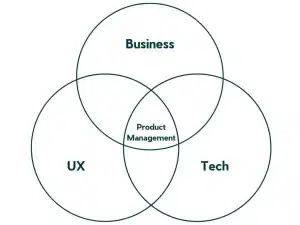
Job Profile
Product Manager
Product Managers plan, steer and control company products and services. They are responsible for ensuring that the process from development to sales runs smoothly.
Product Manager Job Profile
What Is the Salary of an IT-Product Manager?
The average salary for a product manager is around €55,000. As with other IT jobs, the salary grows with experience. Thus, the salary of a product manager with more than 10 years of experience can be over 80,000€ per year.
Other factors that influence the salary for IT product managers are the industry, the size of the company and the state.
Salary by Industry
Software product managers in IT earn up to €6,500 per month. The top 5 highest paid industries for product managers are:
- pharmaceutical industry
- medical technology
- energy and water supply
- electrical engineering
- consumer goods/consumer goods
Salary by Company Size
The basic rule here is: The larger the company, the more you earn as a product manager. In large corporations with more than 20,000 employees, the salary can be around €70,000 per year. In smaller companies with less than 100 employees, the salary shrinks to 50,000€ per year.
Salary by State
Baden-Württemberg leads the field in terms of salary for product managers. It is followed by Hesse and Bavaria. In Baden-Württemberg, the average salary is almost €60,000 per year.
Saxony-Anhalt and Brandenburg bring up the rear with around €44,000 per year.
For freelance IT product managers, the hourly rate is 124€. Calculated on 8h, the daily rate is therefore about 992€.
What Does an IT-Product Manager Do?

IT product managers plan strategies for a specific product, software or service. They act as an interface between business, tech and user experience. This primarily involves marketing and sales strategies.
The essential tasks of an IT product manager can be described in terms of the product lifecycle.
As part of this lifecycle management, product managers work closely with project managers.
Maintaining a requirements specification and reviewing the specifications are also among the tasks of a product manager.
The requirements specification represents a catalog of requirements from the client to the contractor. On the other hand, the requirements specification is the plan of the contractors on how they want to address the requirements. When all parties agree, the work begins and the strategies are developed.
When an IT product manager works in agile management, his role changes to a product owner. Product owners are experts in the Scrum methodology and take a critical role within the Scrum team. In this case, there are no requirements or specifications and the task definition and prioritization come from the product backlog.
Other tasks for a product manager are the planning of promotional activities, pr activities and sales support. The training of employees can also be relevant here.
What's the Difference Between a Product Manager and a Project Manager?
The main difference between a project manager and a product manager are the responsibilities of each role. While the product manager takes care of the strategy of the project, the project manager is fundamentally responsible for managing the team and assigning tasks. In summary, the product manager creates the strategy and plan and the project manager executes it. Neither role is more or less important than the other.
Optimally, the two positions work closely together and support each other so that each can perform their role to the best of their ability. Depending on the size of the project, both roles may fall to one person. This is especially the case with smaller projects, where it is easy for a single person to keep track of all the important aspects.
If you have larger projects in the planning stage, both positions should be filled in each case in order to avoid overloading and the resulting errors.
Find qualified Product Manager.
What Knowledge Do Experts in Product Management Need?
In principle, the “Product Management” degree program is only available at a few universities. However, typical courses of study that end in a job as a product manager afterwards are, for example:
- Business Administration
- Economics
- Marketing
- Business administration
- Engineering
- Natural science courses of study
Training in commercial professions is also possible.
In addition, a product manager must be familiar with various software.
This includes
- Software for product planning (for example: ProductPlan, Productboard or Aha!)
- Design applications (Figma, Photoshop, InDesign, Canva or similar)
- User testing tools (Lookback, Teston, etc.)
- Tools for data analysis (Cumul.io, Segment)
What Is a Product Roadmap?
A project roadmap specifies the project flow and schedule of a project. In the product roadmap, individual steps can be found to fulfill the next project goal, when they should be achieved, and what tasks need to be completed in order to tackle the next tasks.
It is important that the product manager always remains flexible and updates the product roadmap regularly so that changes and problems can be addressed promptly.
But the roadmap should also show what is being developed and the reasons for individual tasks.
The product roadmap serves as a central source of information for the entire project team, so that everyone is on the same level and can approach their tasks based on it.
It is a good idea to create an individual product roadmap for each target group, since not every task is relevant for every person.
For example, there can be a product roadmap for…
…the company management.
…the product manager himself.
…for the development team.
How can you recognize a good product roadmap?
A good product roadmap contains only as much information as necessary and only that which also concerns the target group, so as not to jeopardize clarity. In addition, goals and tactics should be named in the roadmap.
Regular updating and access for all team members is also important so that everyone involved always has the same status.
Finally, a regular exchange with the stakeholders should take place to guarantee that they continue to stand behind and support the strategy. If this is not the case, the product roadmap may need to be changed and a new strategy will need to be designed.
One of the most popular software for product management is Jira.
Find Qualified Freelance-Experts.

Your Contact Person
Sören Elser
Co-founder of ElevateX GmbH and your contact for the strategic use of freelancers.
